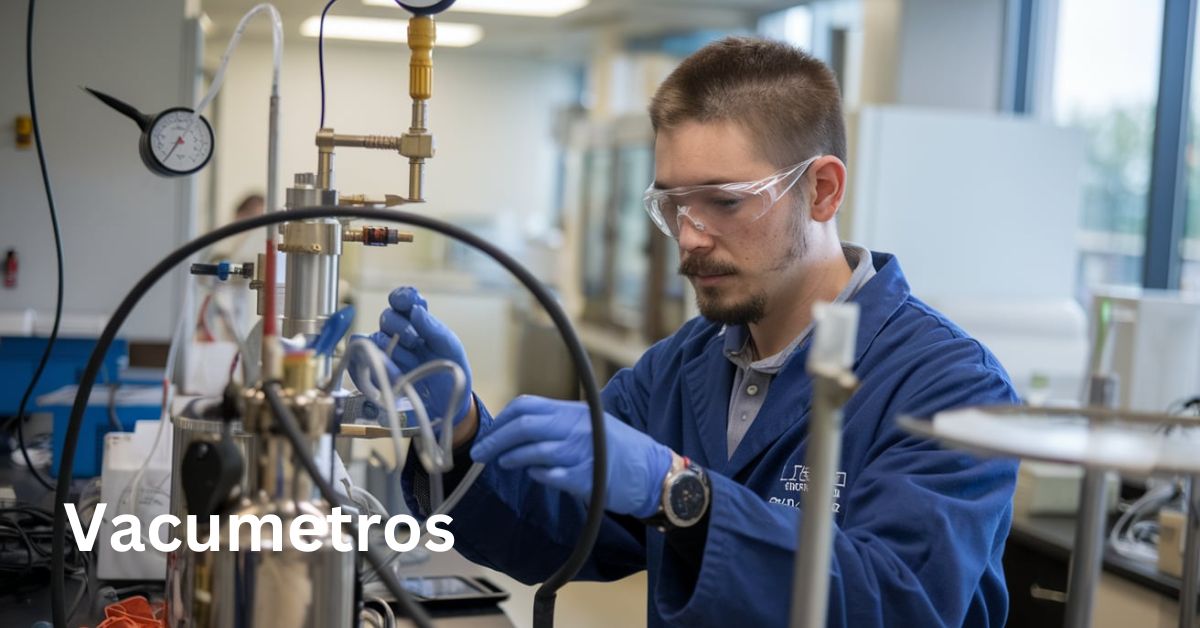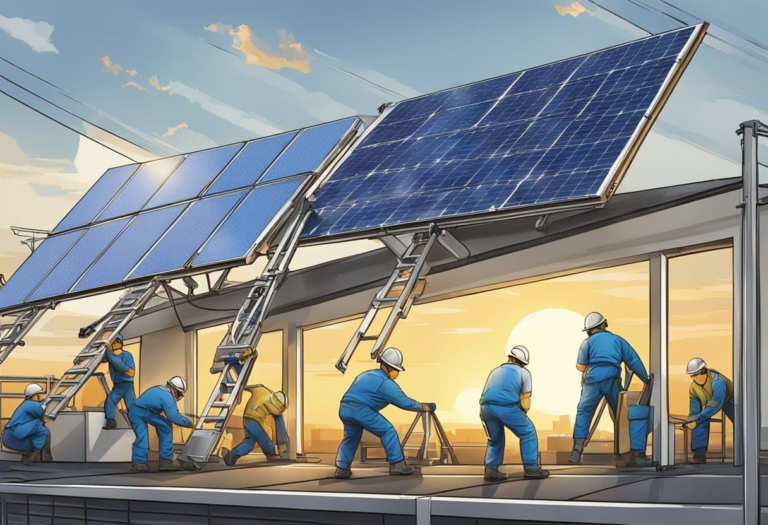Understanding Vacumetros: Precision Instruments for Low-Pressure Measurement
Table of Contents
ToggleIn today’s world, precision and accuracy are crucial, especially in industries that deal with low atmospheric pressure. Vacumetros, or vacuum gauges, are essential instruments used for measuring these low-pressure conditions. Whether in laboratories, industrial processes, or research settings, vacumetros play a vital role in ensuring safety and efficiency. This article delves deep into what vacumetros are, their types, applications, and the significance of selecting high-quality models.
What are Vacumetros?
Vacumetros are specialized devices designed to measure the pressure of gases in a vacuum environment. They are used primarily to determine how low the pressure is compared to atmospheric pressure. Accurate pressure measurements are crucial in many applications, including HVAC systems, laboratories, and various manufacturing processes. By providing precise readings, vacumetros help in maintaining optimal conditions for experiments, production, and safety.
The Importance of Accurate Measurements
Accurate pressure readings are essential for numerous reasons:
- Safety: In potentially explosive atmospheres, accurate pressure measurement is crucial to prevent hazardous situations. Using vacumetros with EX certification ensures that the instruments are designed to function safely in such environments.
- Efficiency: In industrial processes, accurate measurements lead to better control and efficiency. This minimizes waste and ensures the proper functioning of machinery.
- Quality Control: In laboratories and manufacturing, maintaining specific pressure levels is vital for the quality of products and experiments. Accurate vacumetros help ensure that these standards are met.
Types of Vacumetros
1. Mechanical Vacumetros
Mechanical vacumetros utilize physical principles, such as the movement of a diaphragm or Bourdon tube, to measure pressure. As the pressure decreases, the diaphragm expands, providing a readable measurement. These gauges are straightforward and require minimal maintenance. However, they may not provide the high accuracy needed for specific applications.
2. Electronic Vacumetros
Electronic vacumetros use sensors to measure pressure. They convert pressure readings into electronic signals, providing digital output. These devices are generally more accurate than mechanical vacumetros and can often be calibrated to ensure precision. Electronic vacumetros are widely used in laboratories and industries that require exact pressure readings.
3. Absolute Vacumetros
Absolute vacumetros measure pressure relative to a perfect vacuum (zero pressure). This type of gauge is crucial for applications requiring precise vacuum levels, such as in semiconductor manufacturing and research laboratories.
4. Gauge Vacumetros
Gauge vacumetros measure pressure relative to atmospheric pressure. This type of gauge is suitable for applications where the exact vacuum level is not as critical, such as in HVAC systems or certain industrial processes.
5. Capacitance Diaphragm Vacumetros
These vacumetros utilize a diaphragm that changes capacitance in response to pressure variations. They are highly sensitive and provide precise measurements, making them ideal for applications in scientific research and high-tech industries.
Applications of Vacumetros
Vacumetros are used across various sectors, each with its unique requirements. Here are some of the primary applications:
1. Laboratory Research
In laboratories, accurate pressure measurements are crucial for experiments involving gases and vacuums. Researchers rely on vacumetros to maintain specific conditions for experiments, ensuring valid and repeatable results.
2. Industrial Processes
Many industrial processes involve vacuum systems. For instance, in food packaging, vacuums are used to remove air from packages to prolong shelf life. Accurate vacumetros are essential to monitor and control these processes.
3. HVAC Systems
Heating, ventilation, and air conditioning (HVAC) systems often use vacumetros to measure the pressure in refrigerant lines. Accurate readings help in maintaining optimal performance and efficiency in these systems.
4. Pharmaceutical Industry
The pharmaceutical industry uses vacumetros in processes such as freeze-drying and sterile packaging. Maintaining low pressures is essential for preserving the integrity of sensitive drugs and compounds.
5. Aerospace and Defense
In aerospace applications, vacumetros are critical for testing and ensuring the integrity of vacuum environments, such as in vacuum chambers. These tests help simulate space conditions and ensure the reliability of components.
Choosing the Right Vacumetro
When selecting a vacumetro, several factors should be considered:
1. Accuracy
Choose a vacumetro with a suitable accuracy level for your application. Electronic vacumetros typically offer higher precision than mechanical models.
2. Range
Consider the pressure range that needs to be measured. Ensure the vacumetro can accurately measure within this range, whether it’s high vacuum, low vacuum, or absolute pressure.
3. Material and Durability
The materials used in the vacumetro are crucial, especially in harsh environments. Look for models made from durable, corrosion-resistant materials to ensure longevity and reliability.
4. Calibration
Regular calibration is essential for maintaining accuracy. Opt for vacumetros that allow easy calibration or those that come pre-calibrated for immediate use.
5. EX Certification
If you are working in an environment with potentially explosive gases, ensure that the vacumetro is certified for such conditions (EX certification). This certification signifies that the instrument meets safety standards for use in hazardous locations.
Maintenance and Care for Vacumetros
To ensure the longevity and accuracy of vacumetros, proper maintenance is essential. Here are some key practices:
1. Regular Calibration
Calibrate your vacumetro regularly to ensure accurate measurements. The frequency of calibration depends on the application and usage conditions.
2. Cleaning
Keep the vacumetro clean to avoid interference with readings. Use appropriate cleaning agents based on the material of the gauge. Avoid harsh chemicals that may damage the instrument.
3. Avoiding Over-Pressure
Ensure that the vacumetro is not subjected to pressures beyond its rated capacity. Over-pressurization can damage the instrument and affect its accuracy.
4. Proper Storage
Store vacumetros in a safe and dry environment when not in use. Protect them from extreme temperatures and humidity, which can affect their performance.
5. Routine Inspections
Conduct regular inspections to check for any signs of wear and tear or damage. Address any issues promptly to avoid inaccurate readings or equipment failure.
Future Trends in Vacumetros
The field of vacuum measurement is evolving with advancements in technology. Here are some trends shaping the future of vacumetros:
1. Smart Technology Integration
With the rise of the Internet of Things (IoT), smart vacumetros that can transmit data wirelessly to monitoring systems are becoming more prevalent. This allows for real-time monitoring and improved data analysis.
2. Miniaturization
The trend toward miniaturization is making vacumetros smaller and more portable, without sacrificing accuracy. This is particularly beneficial in industries where space is limited.
3. Enhanced Data Analytics
As data analytics continues to advance, vacumetros may incorporate features that allow for more detailed analysis of pressure trends and anomalies, improving decision-making processes.
4. Sustainability Focus
With increasing emphasis on sustainability, manufacturers are developing vacumetros that consume less energy and use more environmentally friendly materials.
Conclusion
Vacumetros are essential tools in various industries, providing critical measurements that ensure safety, efficiency, and quality. By understanding the different types of vacumetros, their applications, and how to choose and maintain them, users can leverage these instruments effectively. As technology advances, the future of vacumetros looks promising, with smart features and enhanced data capabilities on the horizon. Investing in high-quality vacumetros with proper maintenance can lead to significant improvements in operational success.
FAQs About Vacumetros
What is a vacumetro?
A vacumetro, or vacuum gauge, is an instrument used to measure low atmospheric pressure in various applications, from laboratories to industrial processes.
How does a vacumetro work?
Vacumetros can work on different principles, including mechanical movements or electronic sensors, to provide accurate pressure readings relative to atmospheric pressure or a perfect vacuum.
What are the different types of vacumetros?
The main types include mechanical vacumetros, electronic vacumetros, absolute vacumetros, gauge vacumetros, and capacitance diaphragm vacumetros.
Why is accurate pressure measurement important?
Accurate pressure measurements are crucial for safety, efficiency, and quality control in many applications, including those in hazardous environments.
How do I choose the right vacumetro?
Consider factors such as accuracy, range, material durability, calibration requirements, and EX certification when selecting a vacumetro for your needs.
What maintenance is required for vacumetros?
Regular calibration, cleaning, avoiding over-pressure, proper storage, and routine inspections are essential for maintaining the accuracy and longevity of vacumetros.
Are there smart vacumetros available?
Yes, many modern vacumetros are integrating smart technology, allowing for wireless data transmission and real-time monitoring capabilities.
By understanding vacumetros, their applications, and maintenance requirements, individuals and industries can ensure they select and utilize these critical instruments effectively.





